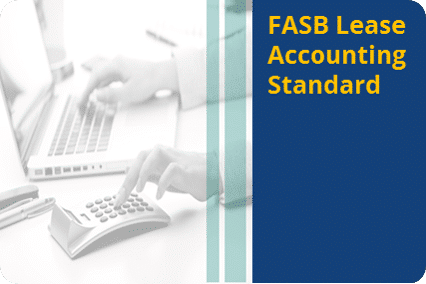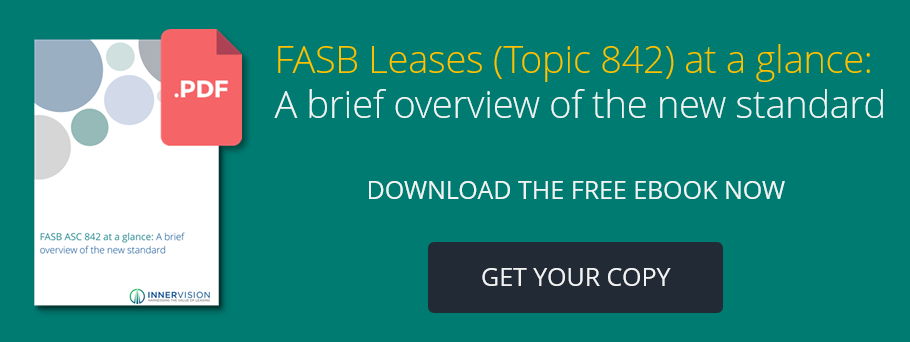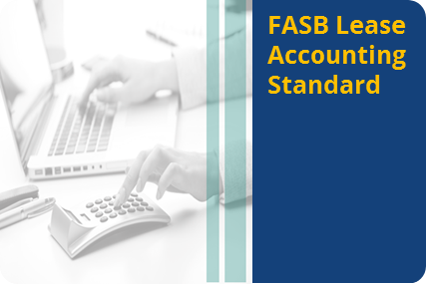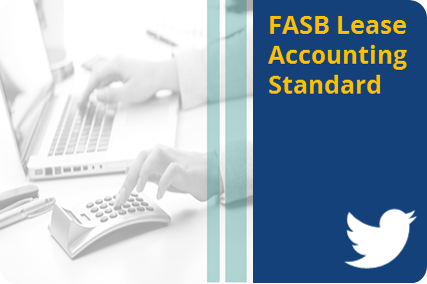FASB have published Leases (Topic 842) – US GAAP changes to lease accounting
Updated 17th May 2021 | 4 min read Published 25th February 2016

On Thursday 25th February, the Financial Accounting Standard Board published their finalised standard detailing the changes to lease accounting for US GAAP users. Public companies using US GAAP will need to prepare their accounts before the new standards effective date, 15th December 2018.
The long awaited standard is the result of the joint project with the International Accounting Standards Board who published their version of the changes to lease accounting, IFRS 16 Leases, in January earlier this year. The boards’ main aim is to provide better transparency and comparability of the financial commitments that arise from leasing on fiscal reports and documentation.
"The new guidance responds to requests from investors and other financial statement users for a more faithful representation of an organization’s leasing activities."
Russell G. Golden, FASB Chairman
As it currently stands, an estimated 85% of the $3.3 trillion worth of global lease commitments do no feature on balance sheets. This new standard, alongside the new IFRS 16, will affect and estimated 1:2 listed companies as it brings the $2.8 trillion of unaccounted for, off-balance sheet liabilities onto financial statements.
Although the boards were aiming to fully converge, their final standards differ in some key areas. Most notable is FASB’s decision to maintain a dual model for lease categorisation. As with the IASB, nearly all leases, including current operating leases will be capitalised as assets and liabilities on the balance sheet. However, unlike their international counterparts, FASB has decided to retain a separation between lease types in a similar way to the current FAS 13/Topic 840 treatment of operating vs. capital leases.
Most leases currently categorized as capital leases (finance leases) will recognise depreciation of the ROU asset separately from the amortisation of the lease liability. Whilst the majority of operating leases will be treated by recognising a single, total expense. This means the FASB standard will require organisations to ensure a firm understanding on the types of leases they agree.
The boards are both confident that, despite failing to fully converge to one global standard, they have developed two standards that tackle the fundamental problem that triggered the project’s initial development; i.e. the transparency of leasing commitments on financial statements.
"We have not reached an agreement on every aspect, but we are 100 per cent converged on the fundamental issue, which is that leases are present obligations that need to be recognised as liabilities on the balance sheet."
Ian Mackintosh, Deputy Chair of IASB
With the standard finally finalised and published, business can now take the practical measures required to ensure full compliance.
The FASB standard gives US GAAP users less time to prepare and potentially more to do. With the inclusion of small ticket assets and the differing accounting treatments of operating and capital leases, US GAAP users really need to get a handle on all of their active leases and determine how they will be affected by the implementation of the new lease accounting standard.
The main message coming from leading accounting firms and leasing experts is that companies cannot afford to underestimate the lease data gathering and review process. Although 2018 may seem like enough time to postpone any action, some entities will need to provide accounting reports prior to the implementation, as early as 2017. As we are already nearing the end of Q1 2016, time if fast running out.
"There is much work for companies to do to understand and implement the changes, not least in the area of data collection, and this work should be started sooner rather than later."
Nigel Sleigh-Johnson, Head of Financial Reporting Faculty at ICAEW
On top of this requirement, businesses will need to gain access to all of their current leases in order to review how they will be affected and accurately report the necessary lease data. Businesses that do not have a coherent or consistent lease management process in place may struggle to gather all of the historical lease data required in time for the transition to the new standard, risking compliance problems as the deadline approaches.
Many businesses do not have a full account of their lease portfolio readily available and those who do are likely to find inconsistencies and gaps.
"With that effort there comes a bit of compliance around ensuring that you have the full population of your leases and all the data that you’ll need to do the ultimate accounting, coupled with the fact that this information may not be centrally housed in one location."
Sheri Wyatt, Managing Director of PwC’s Capital Markets Accounting Advisory Services
With the right team and resources in place, the process can be done quickly and efficiently and determine exactly how much work and what opportunities are available. For more information on how your business is likely to be affected by the implementation of FASB Leases Topic 842 or IFRS 16, talk to one of our leasing experts.
Although there is much to do, this is a manageable process. In fact, with a greater visibility of your business’s internal lease management structures and obligations, lease management software will help run the complex calculations required and highlight inefficiencies within the long term strategy. By working to establish an accurate and logical management system, organisations have the opportunity to transform this regulation into a profitable and optimised benefit.
Useful Links for FASB Leases Topic 842:
FASB In Focus: Leases (Topic 842)
FASB Accounting Standards Update on Leases Webinar
FASB ASU: Understanding Costs and Benefits - Leases (Topic 842)
Share this Article:









